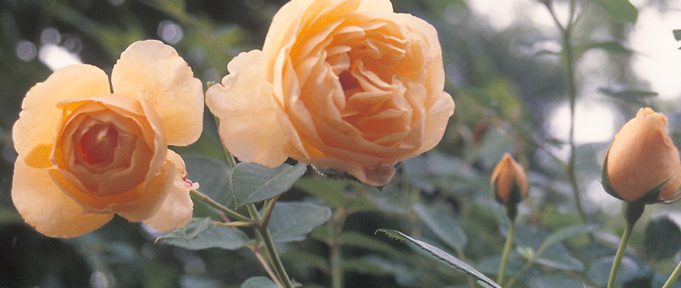Sometimes life’s necessities can turn into small pleasures. This is true of the necessary gardening task of pruning roses. Now is the time to prune your roses. This time of the year we East Texans are losing the precious little tolerance we have for the winter season. So, getting out into the garden and breathing the bracing, fresh air of February and pruning rose portends the lush days of spring. It may be gray and chilly now, but rose pruning time sets the table for a sumptuous feast of blooming roses in the spring. I don’t know about you, but setting the table for a grand and important feast can be a small pleasure. I can remember secretly enjoying the little chore of setting the table for my mother as a boy. I liked setting things out, just so; and, of course, setting the table meant a delicious meal would follow. So it is with pruning roses.
Just like setting the table, there’s certain rules to pruning roses. We’ll begin first with the large flowered roses- Hybrid Teas, Floribundas etc. These roses are pruned very severely. A Floribunda or Hybrid Tea can grow to six feet tall in a single year. All of the canes should be drastically cut back to a bud that is about fifteen inches from the ground. The bud should be one that is facing outward, for that is where the new cane will appear. This will keep the plant from growing in on itself.
Now, most of the large flowered roses are grafted. In other words, the rose is grafted on to rootstock. The rootstock is from a rose that has a very healthy root system. Onto this root system, the Hybrid Tea is grafted giving the plant extra vigor to bloom that it would otherwise not have.
The graft is relatively easy to identify. Make sure no canes are appearing from below the graft. Any canes growing from under the graft may produce blooms, but they won’t be very attractive at all. If your rose bush is several years old, you might want to get a wire brush out and rub down the bud union, which after many years becomes a fist-like, gnarled, woody ball of tissue. This bud union will produce brand new and vigorous canes from which very beautiful roses will bloom.
If you have old garden roses, the pruning technique is different. Old garden roses or shrub roses should be shaped and pruned in a less severe manner than Hybrid teas. Take the rose down to about one third of its existing height. Shape it into a nice rounded fashion like you would any other blooming shrub, an azalea for example. Old garden roses or shrub roses are easily maintained. They are not demanding. You get a lot for the amount of maintenance you put into them. Often throughout the growing season, they will cover themselves in blooms.
When it comes to climbing roses, now is NOT the time to prune them. Any pruning now will cut away the blooms that you would have in the spring. Climbers bloom on old wood that is on the previous summer’s growth. If you prune now you will be cutting all of last summer’s growth and, thus, this spring’s bloom. Prune climbers after their spring bloom. The only maintenance to be done to a climber is to tie it back to the wall and make sure the canes are running parallel to the ground. The more parallel the canes run to the ground, the more blooms you will have on your climbing roses.
One last bit of maintenance. Now is the time to fertilize your roses; for now that you’ve pruned your roses, you will have stimulated them to new growth that should appear sometime in late March. The fertilizer will give them the necessary energy for that new growth. I’m not quite for sure on the botanical mechanics of it, but pruning causes the release of growth hormones resulting in the plant’s breaking bud and putting on new growth. That is why we wait until this time of the year to prune roses. If you prune too early, they will break bud before the last killing frost and that new growth will be lost in a freeze.
A day in the garden doing these simple chores is not an unpleasant task. I have many a rose-growing friend, and I can imagine them right now out in the garden on February days setting the table, as it were, for a feast of roses that will soon follow.

